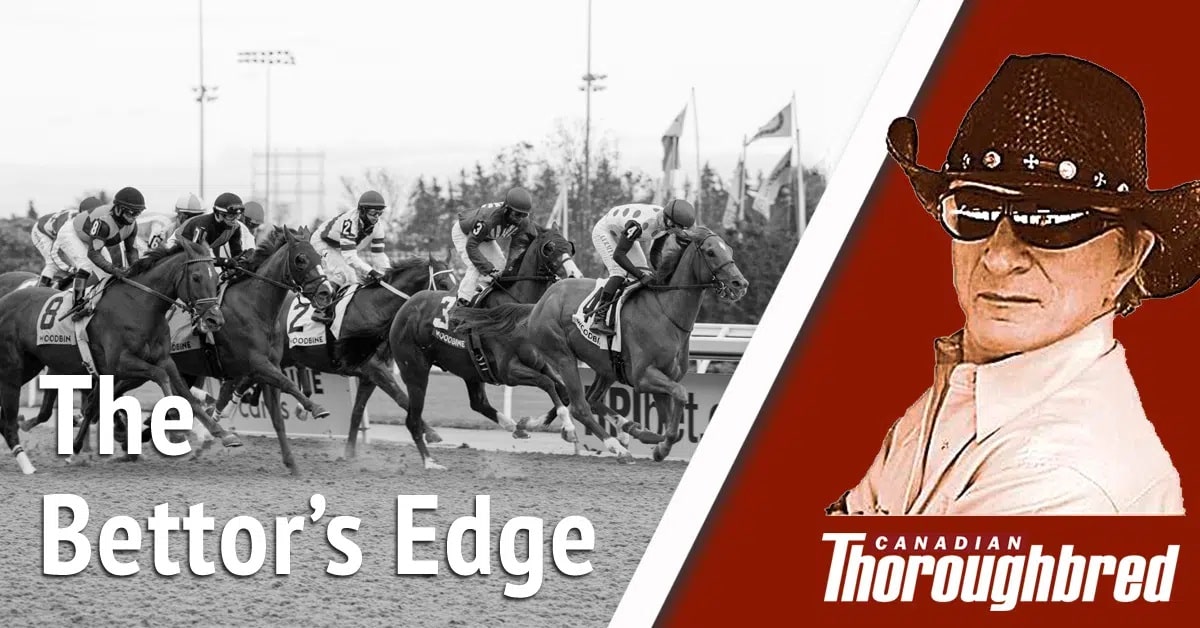Smart players don’t just look at the race they’re going to bet. They know they’ll get clues to horses in their race by having looked at the race before theirs. Why? Because that’s where the probable double payoffs to their race will be posted.
Important questions will be answered: What horses in their race are the most “live” in double play? Are longshots getting more double action than they deserve? Should these horses be added to pick-4s, pick-5s, etc.?
What, for example, did players take away from looking at the double probable payoffs leading into race 2 at Woodbine on Saturday, the first leg of the 20-cent pick-5? The probable payoffs showed that only two horses, #2 Upstart Gentleman and #5 Cotton, were getting any action. There was no suspicious play on any other horses — so players could logically conclude they didn’t need to go more deeply than those two horses in their pick-5 tickets. And #5 had a “rule” going for him, too, because race 2 was a specialty 7-furlong distance in which the horse with the highest Equibase speed figure at 7 furlongs had the best chance of winning and #5 was such a horse. His 7-furlong E speed of 92 was highest in the nine-horse field. Result? He crushed the field by almost six lengths, paying $5.50.
Download the Woodbine program here.
So that horse was almost a key in the first leg of the pick-5. There was a second 7-furlong race in the pick-5 sequence as well, race 4. And who won? The filly that tied for the highest E speed for 7 furlongs, #8 Muskoka Summer. She carried her speed gate-to-wire, paying $11.90. (Both she and #1 Dream and Schemes had an 82 speed figure for 7 furlongs.)
Two other legs seemed very straightforward, too, with leading rider Kazushi Kimura aboard both ultimate winners. In race 5, #6 Scottish Symphony, with the highest E pace figure of 83, went to the lead on the speed-favouring track and didn’t look back ($5.60). And, in race 6, #3 Fortyfiveseventy was a standout for dropping back into an optional claimer after finishing third in a stakes race. The 2-year-old filly easily nailed the front-runner and paid $3.50.
So those four legs had fairly predictable winners. The tricky leg — just by virtue of the $5,000 claiming price — was race 3. As we know, bottom level claimers don’t perform as consistently as higher class horses. In fact, I usually consider taking “all” horses in my horizontal pick bets such as pick-3s, pick-4s, etc. Actually, longshot #9 D’s Ben at 26-1, almost won the race on the lead but #2 Self Inflicted edged him out, paying $9.60.
So, even by taking “all” horses in the $5,000 claiming race, you could have spent mere pocket change for a 20-cent pick-5 ticket that paid $103. The wheel on the five legs could have looked like this: 2 x all 9 x 2 x 1 x 1 = 36 divided by 5 equals a ticket cost of $7.20 – which started by taking only two horses in the first leg after considering the double probable payoffs to horses in the first leg. If nothing else, looking at double probable payoffs are a confidence-booster for horses you end up betting in that race.
Challenge: How about looking at double probable payoffs for a complete card of racing at a track of your choice? Maybe that will emerge as your new best handicapping angle!


